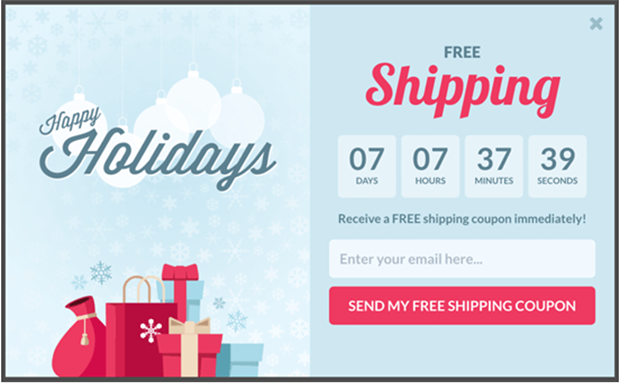
In today’s highly competitive business landscape, finding effective strategies to drive bookings and increase revenue is essential for success. One strategy that has gained significant popularity in recent years is the use of flash sales. Flash sales are limited-time promotions that offer significant discounts or exclusive deals to customers. These time-sensitive offers create a sense of urgency and excitement, motivating customers to make immediate bookings. In this article, we will explore how businesses can leverage flash sales to increase bookings and revenue. From planning and executing successful flash sales to maximizing customer engagement and loyalty, we will delve into the key strategies and best practices for using flash sales effectively.
I. Setting Clear Goals and Objectives

- Define Your Objectives: Before launching a flash sale, it is crucial to clearly define your goals. Are you aiming to increase bookings, boost revenue, attract new customers, or promote a specific product or service? Having well-defined objectives will help you tailor your flash sale strategy accordingly.
- Determine Key Metrics: Identify the key performance indicators (KPIs) that will help you measure the success of your flash sale campaign. This could include metrics such as booking conversion rates, revenue generated, customer acquisition, or customer satisfaction.
II. Segmenting Your Target Audience
- Understand Your Customer Base: Analyze your customer data to gain insights into their preferences, behaviors, and booking patterns. This will help you segment your audience effectively and tailor your flash sale offers to specific customer segments.
- Personalize Offers: Customize your flash sale offers based on customer segments. Consider factors such as past purchase history, geographic location, or preferences to create personalized deals that resonate with different customer groups.
III. Planning and Execution
- Choose the Right Timing: Timing is crucial when it comes to flash sales. Consider factors such as seasonality, holidays, or industry-specific events to identify the optimal time for your flash sale. Avoid competing with other major promotions or holidays that might dilute the impact of your offer.
- Set Clear Sale Parameters: Clearly define the discount percentage, duration of the flash sale, and any specific terms and conditions associated with the offer. Communicate these parameters clearly to customers to ensure a smooth and transparent booking experience.
- Create Compelling Offers: Design irresistible offers that provide significant value to customers. This could include exclusive discounts, freebies, limited-edition products, or bundled packages. The more compelling the offer, the more likely customers will be to take advantage of it.
- Build Anticipation: Generate excitement and anticipation leading up to the flash sale. Utilize social media, email marketing, and other promotional channels to tease the upcoming offer and create a buzz among your target audience.
IV. Maximizing Customer Engagement and Loyalty

- Leverage Multiple Channels: Promote your flash sale across various channels to reach a wider audience. Utilize social media platforms, email newsletters, website banners, and paid advertising to generate awareness and drive traffic to your flash sale landing page.
- Create a Sense of Urgency: Emphasize the limited-time nature of the flash sale to create a sense of urgency and motivate immediate action. Use countdown timers, exclusive access for early-bird customers, or limited quantities to further drive urgency.
- Provide a Seamless Booking Experience: Ensure that the booking process is seamless and user-friendly. Optimize your website or booking platform for easy navigation and efficient checkout. A smooth booking experience can significantly enhance customer satisfaction and loyalty.
- Offer Exclusive Benefits to Flash Sale Customers: Reward flash sale customers with additional benefits or incentives. This could include early access to future promotions, loyalty program upgrades, or exclusive perks to foster long-term customer relationships.
V. Analyzing Results and Continuous Improvement
- Track and Analyze Performance: Monitor the performance of your flash sale campaign by tracking key metrics. Evaluate booking conversion rates, revenue generated, customer feedback, and other relevant data to assess the success of the promotion.
- Gather Customer Feedback: Solicit feedback from flash sale customers to gain insights into their experience. This feedback can help you identify areas for improvement and refine your flash sale strategy for future campaigns.
- Iterate and Improve: Use the insights gained from data analysis and customer feedback to continuously refine your flash sale approach. Implement improvements in timing, offer design, targeting, or promotion to enhance the effectiveness of future flash sales.
In conclusion, using flash sales strategically can provide significant benefits for businesses, including:
- Increased bookings and revenue through time-sensitive offers.
- Improved customer engagement and loyalty.
- Acquisition of new customers through compelling discounts.
- Enhanced brand visibility and market reach.
- Opportunities for customer data collection and analysis.
Contact our Vietnam team today to discuss your business goals and let us collaborate to develop effective flash sale strategies tailored to your needs. We will leverage our expertise in promotional campaigns to maximize your results and help you achieve your business objectives.

Leave a Reply